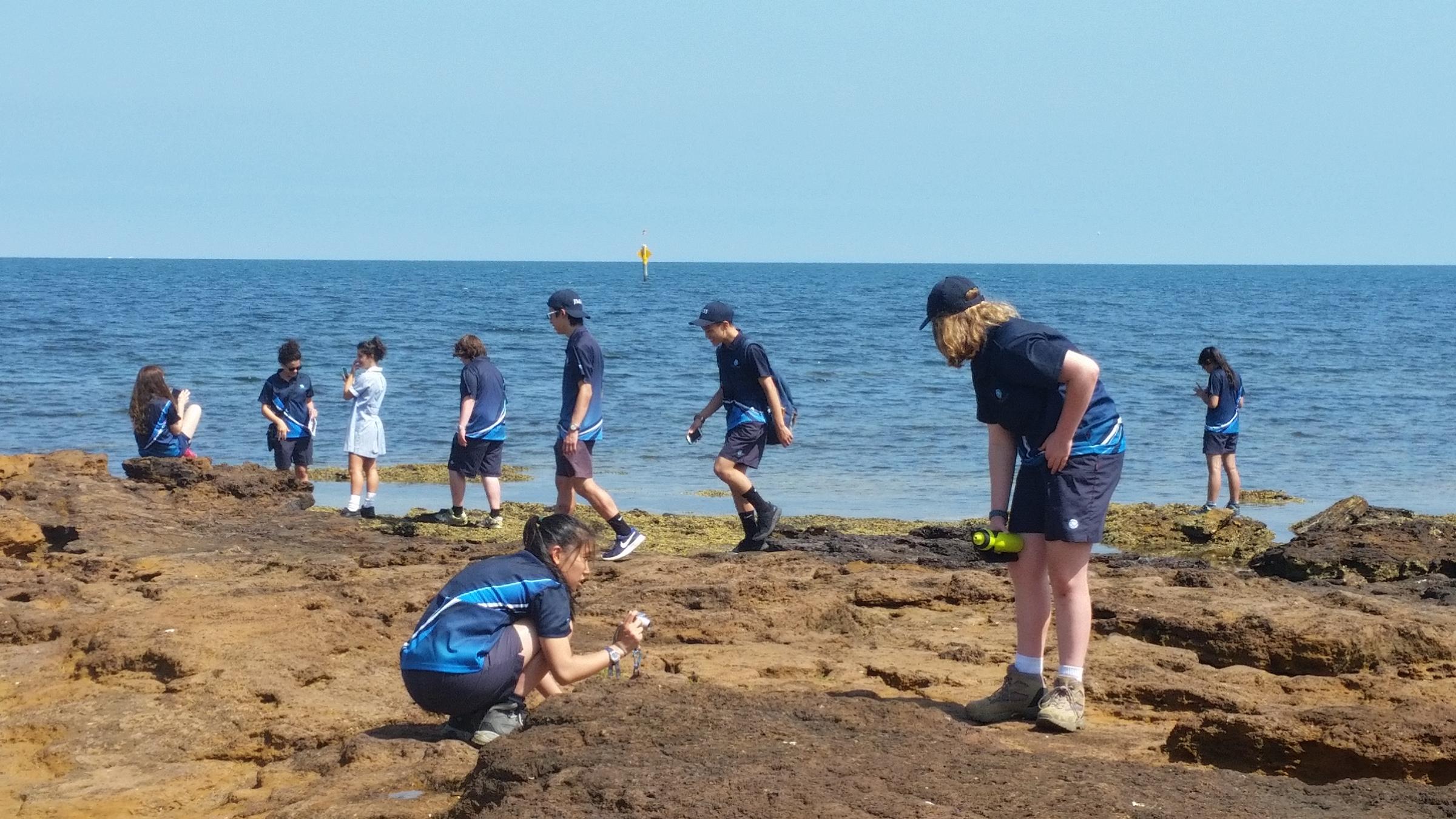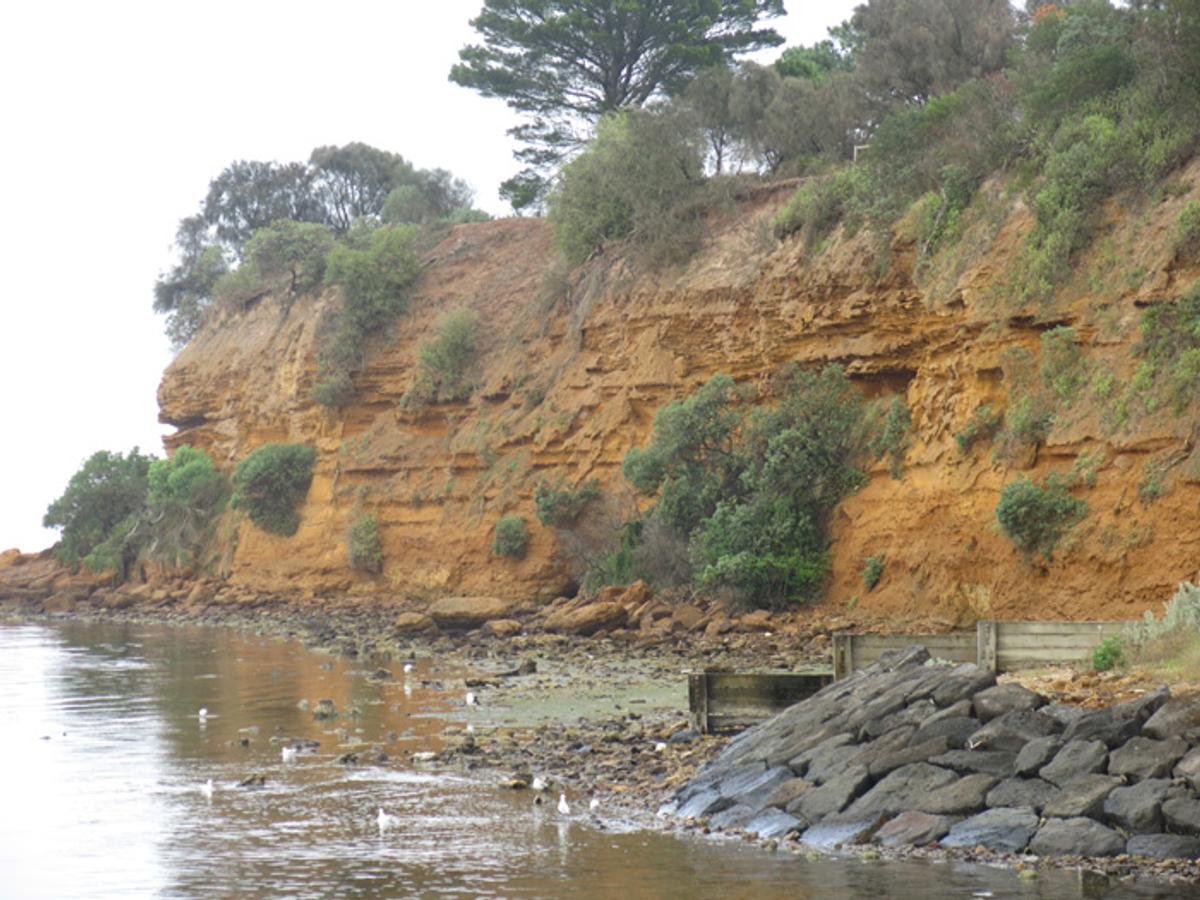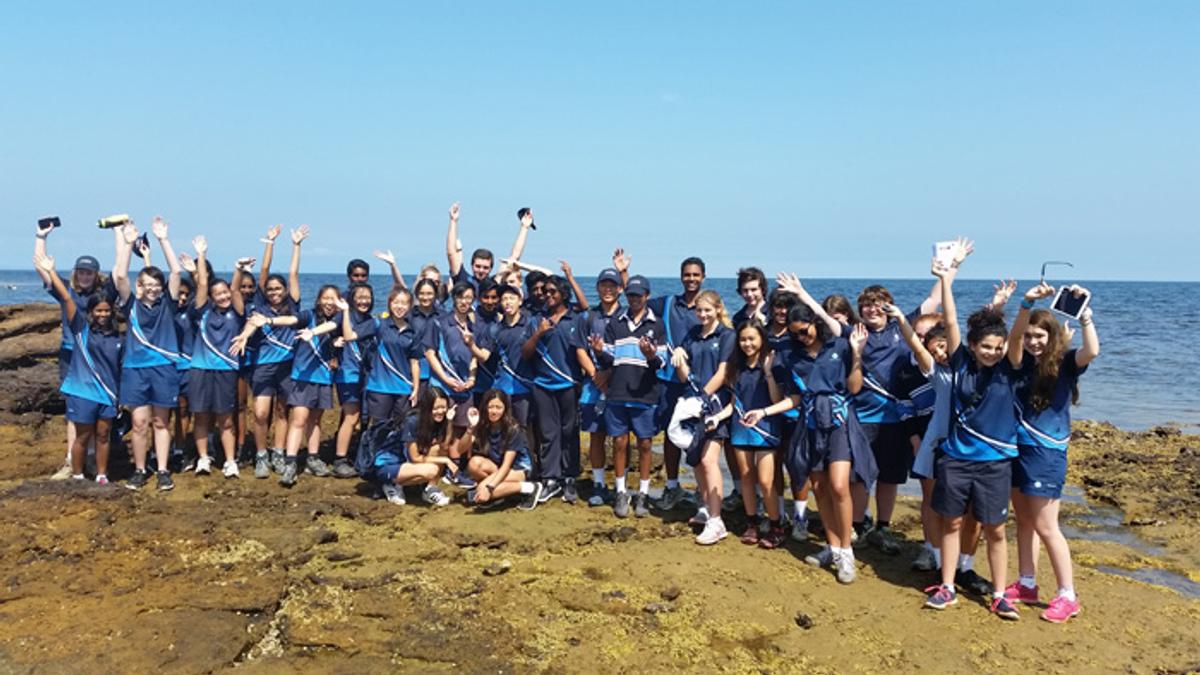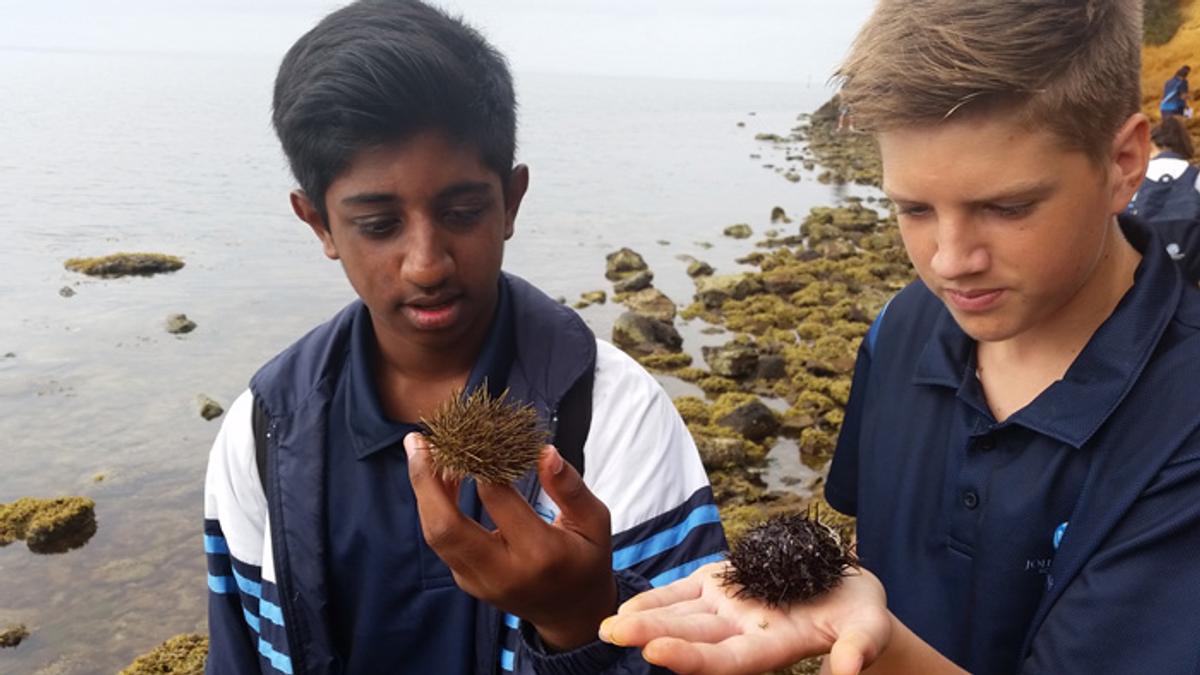Marine Biology

Marine Excursion to Ricketts Point
As part of our combined course with the Dynamic Earth students, our Marine Biology class got the opportunity to go to Ricketts Point in Beaumaris on Friday 11th March. Here, we visited the Ricketts Point Marine Sanctuary and a fossil site near the Beaumaris Motor Yacht Squadron.
This unit focuses on the potential development of a marina at the Beaumaris Motor Yacht Squadron. A controversial debate has arisen, revolving around whether the marina should be built or not. If the development of the motor yacht squadron goes ahead, it could potentially destroy one of Australia’s richest locations of fossils, some of which are millions of years old. This expansion could also destroy the environment which harbours an abundance of marine life.
We were sent to Ricketts Point to investigate and gather data about the past and present environment. The day was filled with observing the diverse marine life and uncovering ancient fossils!
The excursion was led by Ms Chaplin, Mr Anderson and Mr McTier. We began to look for fossils along the coast of Beaumaris as soon as we arrived, eager to experience geoscience first hand.
During this time, we were able to find a range of incredible fossils amongst the black rock sandstone, including the fossils of sea urchins, scallops and corals.
We also noticed strange shapes in the rock that were scattered throughout a great wall of sandstone. We found out that these were actually the remnants of burrows dug by shrimps over 4 million years ago!
By discovering and examining these ancient fossils, it was clear that the site was an invaluable key to the past environment of Beaumaris.
But our investigation didn’t end there; we were also given the opportunity to explore the marine wildlife that was harboured by Ricketts Point.
Here, sloping cliffs of black rock sandstone jutted out into the gentle waters of Port Phillip Bay. The ongoing wave erosion had created a collection of rock pools, offshore reefs and sea caves near the water’s edge. This environment was very accessible, making it the perfect place for the exploration of marine life.
Hidden amongst these rockpools and sand dunes were many unique and diverse organisms like small sea stars, seaweed, shrimp, sea snails, algae, and limpets. Our group was lucky to spot a jellyfish that was floating very close to the surface at the very edge of the rocky platform at the Sanctuary.
After a first-hand experience of uncovering ancient fossils and observing the marine life, we were able to gain an in-depth understanding of the past and present ecosystem. As we boarded the bus at the end of the day, our stance on the issue of the development of the marina was quite clear.
The organisms and fossils we encountered were all evidence of the incredible biodiversity that would be threatened by the development Beaumaris Motor Yacht Squadron. Already, we could see that human activity has had a significant impact on the environment. We found bottles, shoes, plastic bags and beer bottles littered carelessly throughout the site and if the marina were to be built, the environment would be further affected. Not only would the development create an imbalance the ecosystems supported by the marine sanctuary, it would also destroy one of Australia’s richest fossil sites, one that could unlock the many mysteries of our past.
Mira Chowdhary and Tikiri Silva







